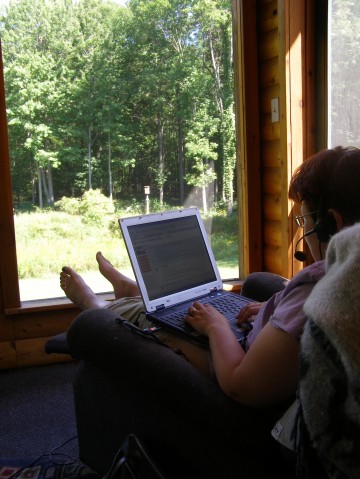
Our modern-day system of higher education was built to mass-produce education during the industrial age. The system is loosely based on a factory-model where students are, in general, processed through the system in batches through a series of distinct steps. As long as the goal of education was to impart information in a uniform manner, this served our needs relatively well, ramping up education from one-room school houses and private tutors to a large-scale operation with a goal of educating the entire population. But we now live in a different era – one where information is abundant and readily available at our fingertips, creativity means greater employability, and the ability to understand interdisciplinary projects and work on a team is vital.
If we’re going to change education to adapt to the new era, there’s no doubt that we have to change the metrics that measure student learning. However, we also have to change the metrics that measure instructor duties and performance.
Let me illustrate with an example of a broken educational metric from the instructor’s point of view: office hours. Most full-time instructors in higher education are required to hold office hours. What purpose were office hours supposed to serve?
Student Engagement
Presumption: Students will use office hours to communicate with their instructors one-on-one when they need help or guidance
Today, the act of being physically present in an office does not create a lot of student engagement. Our students lead busy lives, many raising families and working way too many hours while they simultaneously attend college full-time. Especially on non-residential campuses, the living space these students occupy in their free time is mostly off-campus or online. Rarely does a student “stop by my office” when they can IM, email, VOIP, or call. Of course, I’ve made myself available via those methods (perhaps if I cut them off digitally, they would still appear in person).
Yet, the only educational metric that is tied to student-instructor interaction is a requirement that the instructor is “physically present in the office” for a scheduled amount of time every week. Just as being physically present in the classroom does not equal learning, being physically present in the office does not equal engagement with students.

Collaboration with Colleagues
Presumption: Office hours provide a time for colleagues and administrators to track you down to work together on research, plan, discuss department issues, or just be generally sociable.
Increasingly, the colleagues I collaborate with either have completely incompatible schedules with mine or they teach at other colleges. I’ve collaborated closely with many colleagues that I’ve never even met in person and this is becoming more and more common. At the last conference I attended I had a good giggle out of how much fun we all had with connecting the web handle (e.g. busynessgirl) with the actual person (e.g. maria). I collaborate with my colleagues with web conferencing, skype, email, IM, facebook, and twitter. I also collaborate with my close-by colleagues when I’m in my office, but these are rarely planned events – usually happenstance meetings (and almost every happenstance conversation happens with a colleague that I also “bump into” online in chance IM’s and spontaneous skypes).
Productivity
Presumption: Physical presence = work accomplished
There are various stakeholders in education besides students and instructors (e.g. administrators, boards, parents, and the greater community that surrounds the institution). The majority of these stakeholders work jobs that require hourly accountability (a.k.a. the 40-hour work week). It is likely that some of the pressure for physical office hours comes from the worry that the “invisible” work of instructors (prepping classes, grading papers, and now … teaching online) doesn’t add up the requisite 40 hours in the standard American work week.

Fixing the Metric
I don’t like to present problems unless I can also propose at least one possible solution. Collaboration with colleagues can certainly be measured in other ways: publications, reports, committee participation, conference presentations, etc. The real question is what would be a better educational metric for student engagement? Ultimately I suppose the ideal metric is in learning outcomes, but these are kind of squishy measurables (variation by teaching method, course format, level of student, etc.).
What we need is a communication system that can track IM, email, voice communication, twitter, video chat, etc. that would also allow instructors to quickly click on “in-person” and a students’ name to track that aspect as well. Students get a special label in the system and the system could track the quantity of student interaction with each faculty member. I’m not suggesting a contest amongst faculty for “most communication” here, merely a gateway level of communication that is considered “acceptable” with warnings built in to tell you if you’re really not getting much engagement with your students.
What benefits could such a system have? Suppose you could make short notes (tweets) on each student regarding the conversations you have been having (e.g. “struggling with concept of slope” or “starting meetings with tutor next week”). The next time you communicate with the student, you could see your own notes of the conversation history with that student. I have such a hard time remembering my communications with 100+ students each semester. What a godsend this would be.
So, who could build it? Google would be a contender. It’s possible that these are already features that might be available in products like Google Wave, but I’m not in the loop on that one. Google Apps already have text chat, audio chat, video chat, email, and they’ve even got a version of twitter (the Gmail status updates inspired twitter). Many colleges already use Google Apps to manage email on campus. Add automatic tagging of student conversations with instructors, an easy way to indicate face-to-face meetings, and the ability to take notes on conversation history (there is a “Notes” field in contacts, but it’s not easy to get to).
Damn. Now I’m craving another application that doesn’t exist yet. You?

